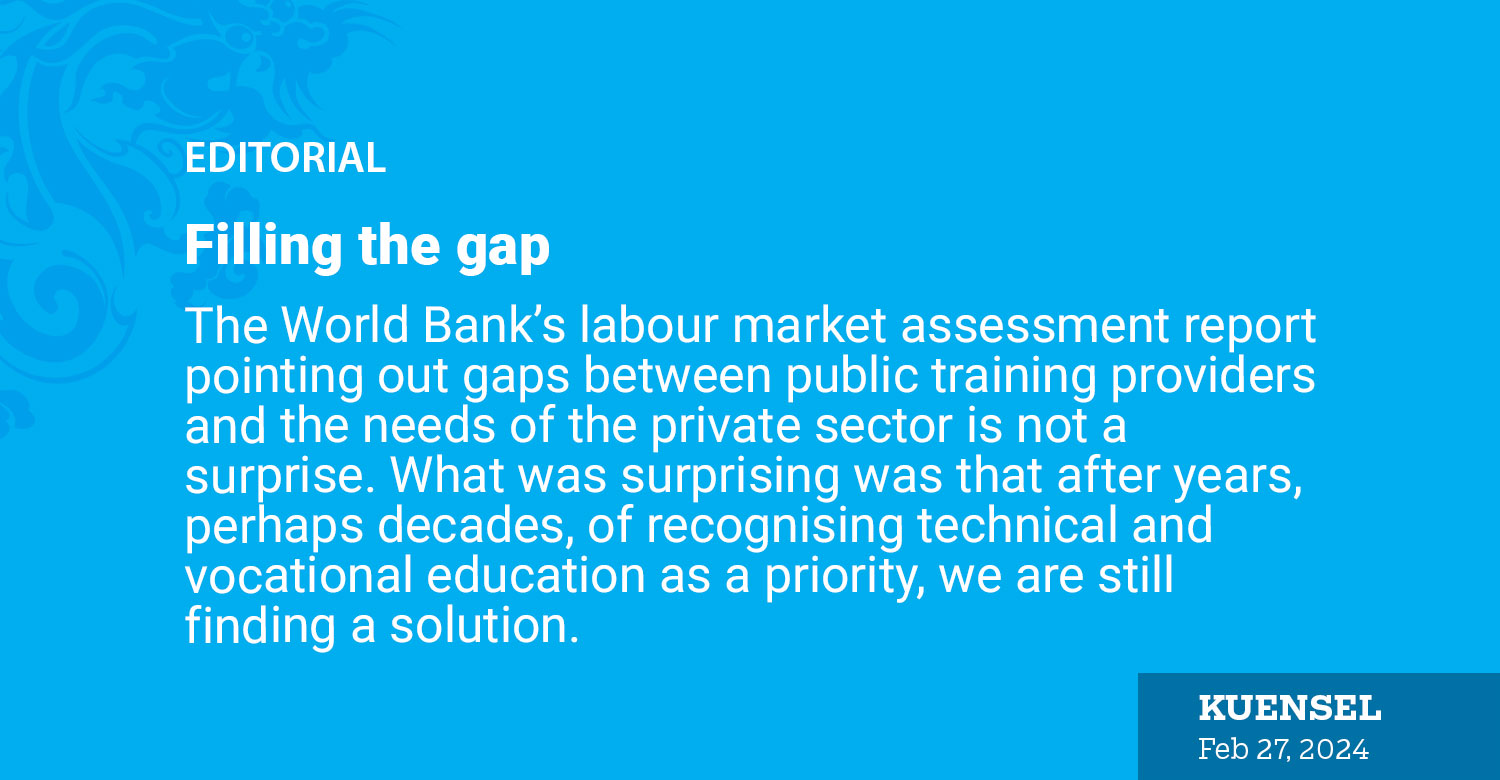The World Bank’s labour market assessment report pointing out gaps between public training providers and the needs of the private sector is not a surprise. What was surprising was that after years, perhaps decades, of recognising technical and vocational education as a priority, we are still finding a solution.
In other words, we are still talking about the mismatch of skills and job demand in the country. Knowing that all Bhutanese students will not go on to become civil servants, TVET was seen as a good alternative. We needed plumbers, electricians, mechanics, carpenters and many more to fill the shortage or replace the thousands of expatriate workers in the country. The demand was there and is still there. Did we do enough to skill our people or did we choose the right set of skills?
What is also surprising is that unemployment rate among TVET graduates remains relatively high, and even those who manage to secure employment often find themselves working in sectors that are not aligned with future-oriented industries. Desperate, many are working in sectors that they are not trained for.
According to the report, in 2022, only 67 percent of TVET graduates managed to secure employment within a year of graduating. Among the unemployed TVET graduates, nearly half, about 49 percent, expressed a need for further support in finding employment. This is another concern noteworthy for our policy makers. A six-month training should not be the end. They need re-skilling and refresher courses to keep up with changes. For instance, we need to send the automobile mechanic trainees to China to repair the electric vehicles instead of learning their skills on old and discarded vehicles, the only available at the training institutes.
Critics say that our approach to TVET had been flawed from the beginning. It was seen as a course or opportunity for the “failures” – those who could not get into government schools or colleges after class X or XII. Technical and vocational skills, going by the demand today provides a huge opportunity to both provide and create jobs. For instance, there is almost a monopoly in automobile repair services. The few workshops dictate the price of everything from repairing to spare parts.
Meanwhile, a report on how the private sector treats their employees could be a good intervention in re-looking at our vocational and technical education, particularly the impact on employment. TVET graduates attribute the poor wages, long working hours, lack of labour rights and job insecurity as issues confronting them.
A demand-driven approach and fostering closer collaboration between TVET institutions and employers could tackle the identified skill mismatches in the labour market, but there are other conditions hindering the sector. A good reference could be the feedback from Bhutanese working in Australia. Those with technical skills, say a plumber, an excavator operator or a locksmith earn more than the university graduate or even a civil servant.


